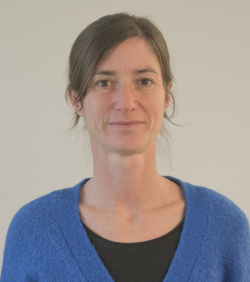Modelling variable expressivity of an SCN5A founder mutation in hiPSC-derived cardiomyocytes – a warning about the model’s variability
 Brugada syndrome (BrS) is a rare inherited cardiac arrhythmia disorder predisposing to ventricular fibrillation and sudden cardiac death. SCN5A is a key gene linked to BrS, encoding the cardiac Nav1.5 sodium channel. Here, we focus on a specific SCN5A founder mutation (c.4813+3_4813+6dupGGGT) identified in over 25 Belgian families, leading to varying clinical manifestations and penetrance. iPSC-CM of five BrS patients with different disease severity, two unrelated healthy control individuals and one isogenic control were created and RNA/protein expression, sodium current and action potentials investigated. At least two separate differentiations were performed of two different iPSC-clones per individual. To improve maturation T3 hormone was added and cells were cultured for at least 30 days after the start of differentiation.
Brugada syndrome (BrS) is a rare inherited cardiac arrhythmia disorder predisposing to ventricular fibrillation and sudden cardiac death. SCN5A is a key gene linked to BrS, encoding the cardiac Nav1.5 sodium channel. Here, we focus on a specific SCN5A founder mutation (c.4813+3_4813+6dupGGGT) identified in over 25 Belgian families, leading to varying clinical manifestations and penetrance. iPSC-CM of five BrS patients with different disease severity, two unrelated healthy control individuals and one isogenic control were created and RNA/protein expression, sodium current and action potentials investigated. At least two separate differentiations were performed of two different iPSC-clones per individual. To improve maturation T3 hormone was added and cells were cultured for at least 30 days after the start of differentiation.
Expression studies revealed the presence of two mutant transcripts in BrS patient iPSC-CM besides the wild type (WT) transcript but no significant difference in expression of the latter was observed between patients and controls or between symptomatic/asymptomatic patients. Sodium current density or AP characteristics did not show statistically significant differences between patient and control or symptomatic/asymptomatic patient iPSC-CM in general due to the high variability in the data. Comparing iPSC-CM of a severely affected patient and its isogenic control, the sodium current density and APD90c were significantly decreased.
Overall, we were able to model a Belgian SCN5A founder mutation and highlighted the added value of the use of iPSC-CM as disease specific cell type. Due to the high variability in our results, arising from both intra- and interclonal differences, detection of statistically significant differences between patients and controls and between symptomatic and asymptomatic carriers was hampered, but we show that the use of isogenic controls is a promising strategy. Variability in gene expression and functional characteristics observed in 2D iPSC-CM cultures over clones, differentiations and even cell populations within one differentiation warrants caution for the use of this model.
This will be a hybrid seminar held at the IEKM seminar room, 1st floor, Elsässer Str. 2Q.
Prior registration is required – please contact info@sfb1425.uni-freiburg.de.








